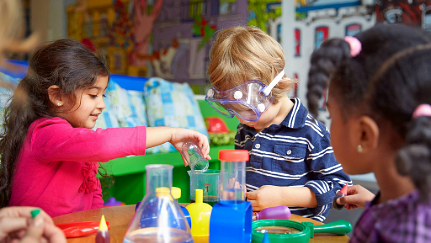
According to the National Fire Protection Association, U.S. fire departments responded to an average of 4,980 structure fires in educational buildings each year from 2011 – 2015. That’s why it’s so important to stress fire safety education in our schools. Take a look at the following school safety tips, and learn how you can teach school fire safety prevention to your children or students.
School fire prevention
Nearly 41% of all school fires are started intentionally. Needless to say, implementing these fire safety measures in schools are vital:
- Exterior lighting with timers, motion- or daylight-detection sensors
- Shrubbery and trees trimmed to keep areas around the building unobstructed
- Intrusion alarms on doors, windows, ventilator openings and roof hatches
- Trash receptacles stored away from buildings to reduce danger of fire. Locked metal lids for extra protection.
- Encourage neighbors to alert school personnel to signs of vandalism
School fire safety education
Educating and preparing students for a fire emergency should be a priority.
- Conduct expected and unexpected monthly school fire drills in which everyone participates
- Inspect exits regularly to ensure stairways, doors and windows are unblocked and working properly
- Train students on how to respond to a fire alarm during a school fire drill
- Know locations of the fire protection system, fire alarm pull stations and sprinklers
- Make sure every room has a map showing 2 exits
- Pair students with specific needs to an adult or classmate for extra assistance
- Have a predetermined location where students know to meet once they exit the building and practice during a school fire drill
- Have a roster to ensure every student is accounted for
- Encourage parents to practice home fire drills, and prepare them in the event of a residential fire
College fire safety
These school safety tips focus mostly on elementary, middle and high schools. However, they can also apply to college buildings, where firefighters respond to about 3,810 college fires each year – 88% of which are due to cooking mishaps. Here’s a college-level course in fire prevention:
On-campus fire safety
- Cook only in designated areas
- Keep cooking areas clean and free of clutter
- Never leave cooking unattended
- In case of a fire inside a microwave, close the door and unplug the unit
Campus lab fire safety
- Never leave lab experiments or pressure vessels unattended
- Keep flammable gases and chemicals away from heat
Off-campus fire safety
- Be sure each bedroom has a working smoke alarm
- Make sure the building sprinkler system is well maintained
- Building heating and fire-prevention systems need to be checked annually by fire officials
General college fire precautions
- Identify the 2 closest exits and all possible evacuation routes
- Know locations of fire alarms and how to use them
- Report vandalized fire equipment to campus security
Of course school isn’t the only place to promote fire safety education. Check out our fire safety tips for the home and workplace fire safety tips so that you can practice fire safety 365 days a year.



